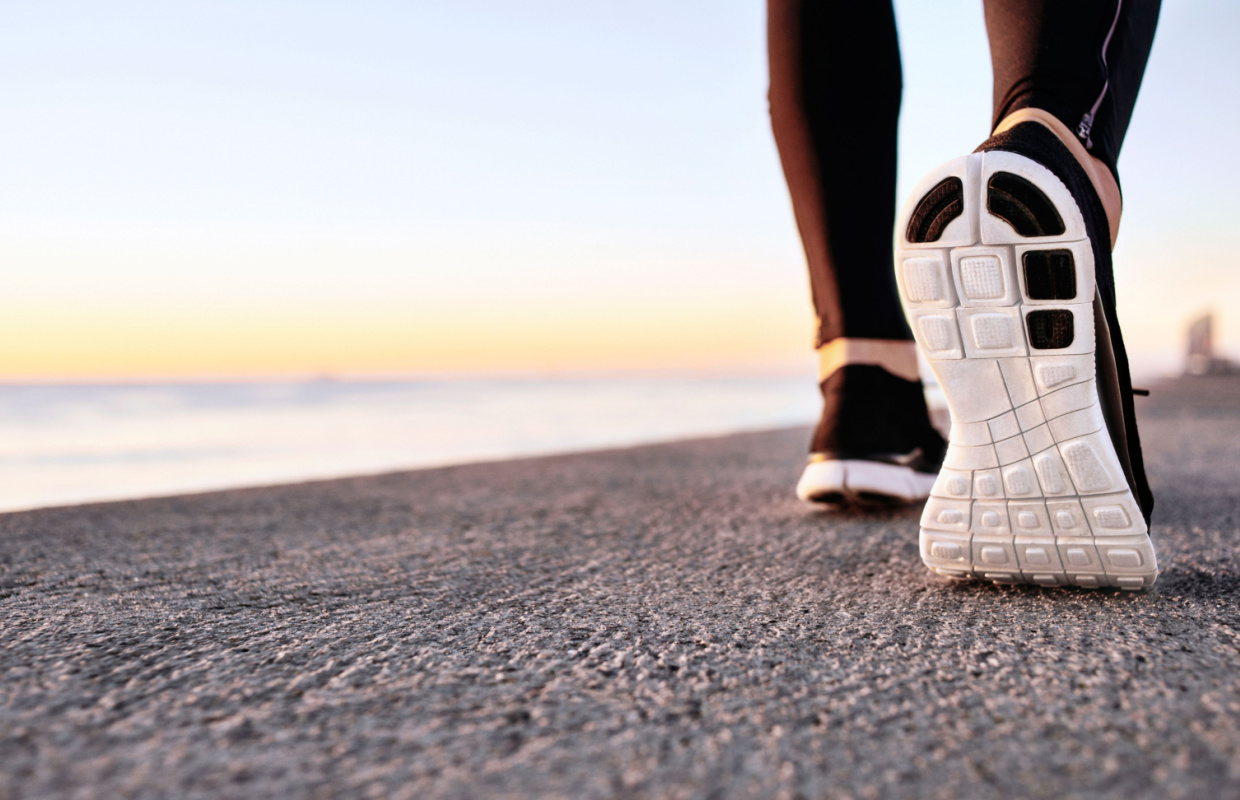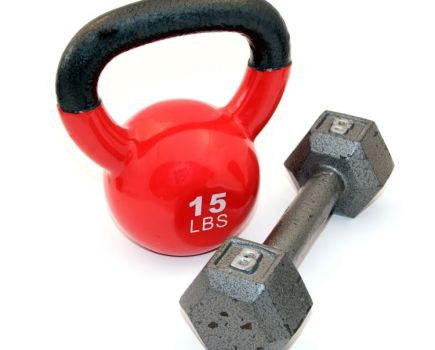If you’re just getting started on your fitness journey, here’s how to walk to lose weight.
If you’re on a weight loss journey, it’s important to look at your life from all angles – from your nutritional choices, to fitness and lifestyle habits. But that doesn’t necessarily mean you have to whip out an exercise mat and start lifting or stretching in ways which are alien to you. Instead, there is another much simpler way to get started. Walking is one of the most accessible and easy ways to get in shape and kick-start your weight loss journey. But, while we all know about getting the recommended 10,000 steps a day, it’s rarely explained why that’s a guideline. In this article, we’ll get you up to speed on everything you need to know about walking to lose weight.
The expert voice
“Any exercise that increases your heart rate is going to be good for weight loss, but walking is so easy because you don’t need loads of kit – you can just go out your front door and walk around the block a couple of times,” says the Institute of Sport, Exercise and Health’s Dr Ian Beasley.
He adds that walking is low impact – “you’re very unlikely to get injured”. Plus, it doesn’t have the socio-psychological barriers that can come with other cardiovascular exercises like running or swimming. “If you think you don’t look good in running kit, that doesn’t really matter because you’re just walking – it’s what everyone does.”
Learning how to walk to lose weight is also a good gateway form of exercise for those who might not have been active for a while and are concerned about pushing themselves too hard too fast. “When people get out of breath and it hurts a bit, they get scared,” explains Beasley. “Walking is really good, because you don’t have to go mad with your heart rate.”

Is walking good for weight loss?
Short answer, yes. A study from 2018 found that walking 10,000 steps a day with just over a third of that coming in intervals of more than ten minutes lost weight. Furthermore, a 30-minute walk at 3mph will burn 138.9 kcal if you’re a 70kg male (and even more if you’re heavier). To understand why walking is good for weight loss, though, it’s important to have a quick biology lesson on how the body fuels different intensities of exercise.
The science
“Walking is an aerobic exercise. In other words, as you do it, you breathe in air. That air has got oxygen in it and the oxygen ‘pays’ for the exercise,” explains Beasley. The oxygen is transported to muscles in your blood, where it’s used by mitochondria in cells to create energy using your body’s fat and glucose (sugar) stores. With high-intensity anaerobic exercise, oxygen can’t be delivered quickly enough. So, glucose is broken down within the muscles themselves to create energy.
Your body therefore only uses fat as a fuel source during aerobic exercise. However, the ratio of fat to glucose can depend on your heart rate and fitness levels. “If I’m really unfit and I go out walking, my primary fuel is going be glucose. But, the fitter I get, [the more I’ll] use fat as my primary source and it’ll take four to six weeks to get fit enough before you start using those fat stores optimally,” he says.
By the way, if you’re looking to shed some pounds in that sort of time frame, check out MF‘s six-week fat loss plan.
“There’s lots of stuff in the literature about if you want to learn how to walk to lose weight, you [shouldn’t] go above 65% of your maximum predicted heart rate.” Go above this heart rate, and you move from an easy to an aerobic zone of exercise, increasing the proportion of glucose used as a fuel source.
How to work out your maximum heart rate
While the most accurate way to find out your maximum heart rate is by conducting a treadmill stress test, an easier (if slightly less accurate) way is 220 minus your age. So if you were 30, your maximum heart rate would be 190 and you therefore shouldn’t go above 123 BPM when walking if aiming for weight loss. If you’d rather measure things more accurately and your treadmill isn’t equipped with the right monitoring tech, perhaps consider picking up one of the best heart rate monitors on the market to keep things in check.
Beasley caveats that “the real problem for very obese people is they can’t walk very far without getting out of breath, because they’re carrying too much weight”. He suggests, “dieting in the first phase is the most important thing to lose a bit of weight and then gradually start walking.”
He also warns against expecting instant results when it comes to walking for weight loss. “Don’t expect the weight to drop off in the first few weeks, because it really won’t. You’ve got to walk probably three or four times a week for half an hour, then you’ll get the best out of it.”
How to walk to lose weight
If you want to learn how to lose excess weight and burn more calories on a walk, the most obvious tactic is to increase the duration. However, upping the speed and gradient can also have a similar effect – hence the popularity of the viral treadmill-based ‘12-3-30 workout’ on TikTok.
How to do the 12-3-30 workout:
- Set a treadmill to an incline of 12 and speed of at least 3mph.
- Now simply walk like this for 30 minutes
- Avoid holding onto the handrails – this will reduce energy expenditure.
- As your fitness improves, increase either the incline or the speed.
How else can we walk to effectively lose weight? “Nordic walking – walking with sticks – will accelerate the calorie burn,” adds Beasley. “This is because you’re using your arms, you’re using more muscles, so your use of oxygen will go up and it’s likely that you’ll lose a bit more fat.”
If you’re struggling to fit walks into your schedule, one way of incorporating them is through incidental exercise. “If you’re at work and you need to go to the post office at lunchtime, instead of going straight [there], walk around the block [on your way there] and walk around the block on your way back. That’s your exercise for the day and you don’t have to fit it in when you get home.”
Finally, step count isn’t the be all and end all when it comes to walking for weight loss. “If you look at the studies, they all say time rather than steps,” Beasley explains. “If you’re doing your 10,000 steps, they say that’s 4-500 calories a day. But, everyone’s so individual, it’s difficult to tie that down.” He recommends investing in a smartwatch that can track your calories burned more accurately.

What are the other health benefits of walking?
Walking isn’t just beneficial for weight loss. Like other forms of aerobic exercise, it can have a knock-on effect, creating a positive cycle that in the long-term will reduce risks of a number of different health conditions.
“Aerobic exercise helps control your cholesterol,” says Beasley. “Cholesterol is the thing that promotes the hardening of the arteries.” Known as atherosclerosis, it makes it difficult for blood to flow through them. This increases your risks of heart attack or stroke. “If you can control your cholesterol, then you control the hardening of the arteries.”
How walking decreases your risk of Type-2 diabetes
Learning how to walk can also help to control your use of insulin, reducing your chances of getting Type-2 diabetes. “Your use of sugar and your control of glucose is facilitated by aerobic exercise,” Beasley says. “We all have some insulin, and the job of insulin is to allow sugar or glucose to enter cells and do their job. If you exercise, your sensitivity to the insulin you have is heightened, so you don’t need to produce so much insulin and your control of glucose is much better.
“The real problem is that overweight people have less insulin sensitivity, so [their pancreas] has to produce loads of insulin in order to control their glucose.” Over time, your cells become resistant to insulin, reducing their ability to take glucose from the blood. This leaves you with high levels of sugar in your bloodstream and a pancreas that simply isn’t able to produce enough insulin.
“The other problem with insulin is it’s a storage hormone, so you store everything, including fat, and that’s why you put on weight. So, it’s a vicious circle. You can untie that vicious circle by [exercising] and because your blood vessels and your heart are much more efficient, then your blood pressure is controlled as well. Walking is a fantastic tool and underused historically by the medical profession.”








